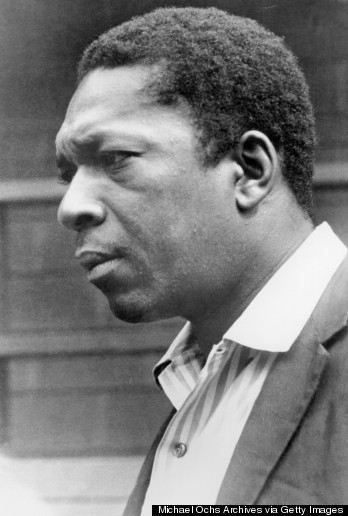



By Kai EL’ Zabar
The holiday season had already begun when Coltrane stepped his feet inside his engineer Rudy Van Gelder’s recording studio in Englewood Cliffs, New Jersey. It was December 9, 1964 and outside Christmas songs played on the radio and seeped from the pores of homes of families into the cold streets celebrating the season with cheer. Van Gelder shut the outside sounds out as he focused on the music in front of him — jazz as he awaited saxophonist John Coltrane and his three-piece supporting band to set up for a recording session. That night Coltrane birthed “A Love Supreme,” a milestone recording in the history of jazz whose themes of spiritual rebirth and inspiration meshed with the hope and optimism of the holiday season.
“A Love Supreme,” was the ultimate statement by John Coltrane, his testimony of God’s Supreme love presented as a suite in four parts: “Acknowledgement,” “Resolution,” “Pursuance” and “Psalm.” It is without question sacred music as you’ve never heard it before. It is holy like David’s dance when he did so to praise God and express his love. There is nothing oppressive about it and Coltrane suppressed nothing, beginning with the hypnotic prelude that absorbs your soul and time is no longer an awareness. You are swept in the sanctuary of the sermon. There it is, the bass, that simple theme “A Love Supreme, A love Supreme, A Love Supreme,”a simple blues lick that sings the notes or are they words? They sure sound like “A Love Supreme.” And so the journey begins taking us to a higher state led by Coltrane’s extraordinary tenor. The music is, expressed authentically and individually through each musician as one, moving though changes soaring and sometimes solemn, soulful and seeking, at times meditative. You can hear Afro-Latin groove that Elvin Jones is playing on the drums and by the time Coltrane starts blowing, multiple rhythms are being played simultaneously.
If you’re not accustomed to polyrhythmic sound then it will appear at first that it should be weird, but it isn’t and you allow it to embrace you and swallow you whole.
“A Love Supreme” was a key part of Coltrane’s spiritual path awakening him from the shroud of drug and alcohol abuse. “During the year 1957, I experienced, by the grace of God, a spiritual awakening, which was to lead me to a richer, fuller, more productive life,” the saxophonist, then 38, wrote in the album’s liner notes. “At the time, I humbly asked to be given the means and privilege to make others happy through music. This album is a humble offering to HIM.”
Transformed yes but Coltrane was a black man from North Carolina, who wrote a ballad for four little black girls who had been blown up while attending Sunday school in their church by the Ku Klux Klan, and had conquered the horse that rode in his veins. He rose up from the death that rode him and allowed the music to play through him. Gospel is the blues removed of its tendency towards the base. The intensity of the spirit expression and testimony of life one in the here and now and the other in the hereafter are the same authentic passionate voice of joy and pain exclaimed from different starting points. The message is the same. Whether struggle and strife or peace and calm we sing because it’s life and life is a blessing. “A Love Supreme” shakes us from the darkness and pulls us into the light proclaiming ever so profoundly that God’s voice is the voice and we listen attentively with gratitude towards the creator expressing our love for the gift of life.
It’s not unusual for artists to spend months or years creating an album, yet “A Love Supreme” was recorded in approximately four hours. The album was released in 1965 and became a commercial and critical success for Coltrane. It has been certified gold (sales of 500,000 copies) in Japan and the United States. “A Love Supreme” was selected as Record of the Year in the Readers Poll of DownBeat Magazine. Coltrane was also named Tenor Saxophonist and Jazzman of the Year, and was inducted into the magazine’s Hall of Fame.
As time has come to pass, the impact of Coltrane and “A Love Supreme” has only has continued to root itself deeper and deeper into the foundation of jazz. The magnificence of the self expressed improvisation, sure turns some people off but the majority who listen and truly, will never be the same after listening to this brilliant composition. Coltrane as a bandleader, shared in the birthing with his fellow creators, who included Jones, bassist Jimmy Garrison and pianist McCoy Tyner. Garrison’s light, heartbeat bass at the end of “Acknowledgement” recalls a petitioner at prayer, while Tyner’s sharp piano work lets the music take flight on “Pursuance.”
Thank Coltrane for “A Love Supreme”, thank God For John Coltrane.